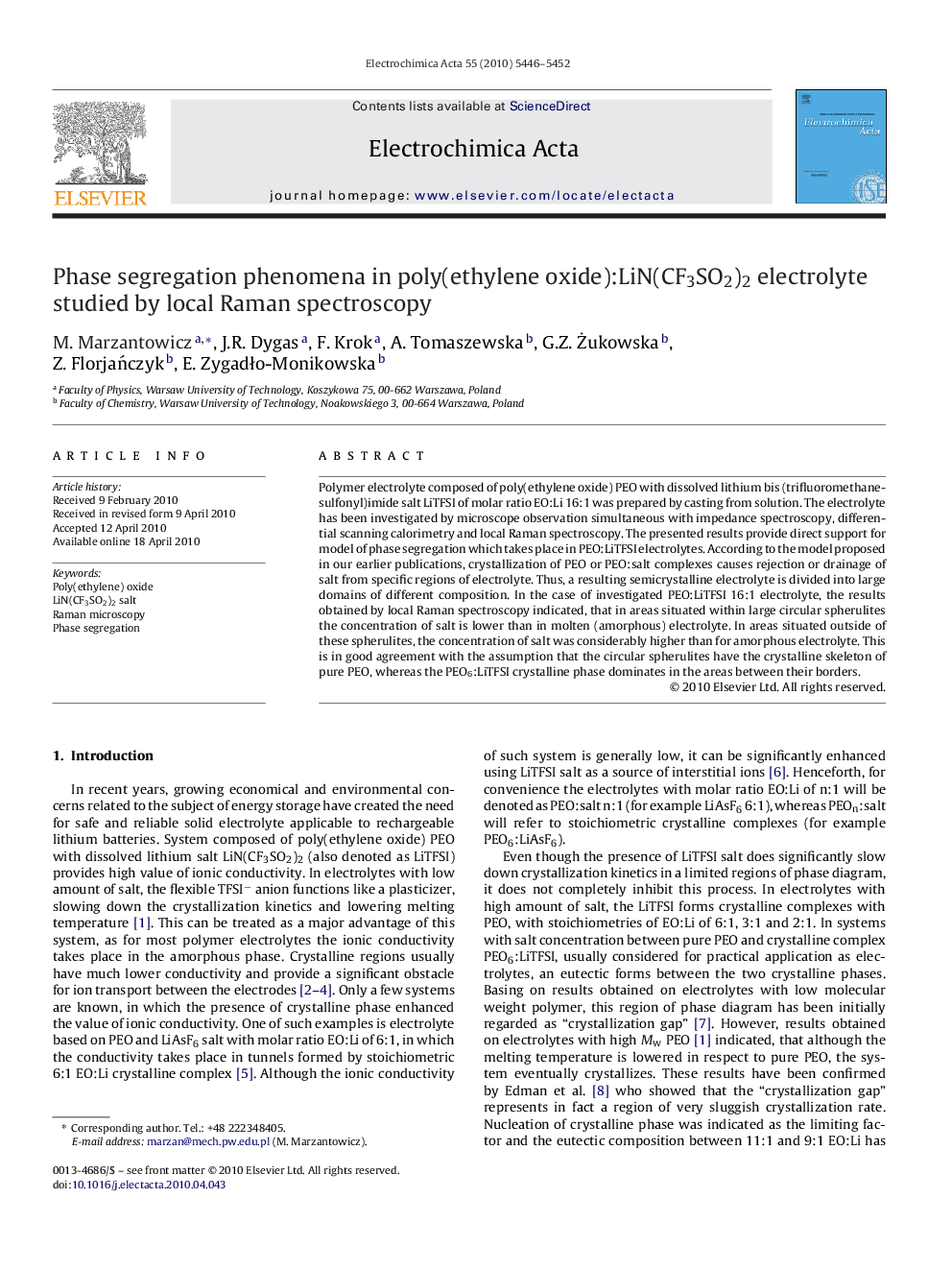| Article ID | Journal | Published Year | Pages | File Type |
|---|---|---|---|---|
| 191353 | Electrochimica Acta | 2010 | 7 Pages |
Polymer electrolyte composed of poly(ethylene oxide) PEO with dissolved lithium bis (trifluoromethanesulfonyl)imide salt LiTFSI of molar ratio EO:Li 16:1 was prepared by casting from solution. The electrolyte has been investigated by microscope observation simultaneous with impedance spectroscopy, differential scanning calorimetry and local Raman spectroscopy. The presented results provide direct support for model of phase segregation which takes place in PEO:LiTFSI electrolytes. According to the model proposed in our earlier publications, crystallization of PEO or PEO:salt complexes causes rejection or drainage of salt from specific regions of electrolyte. Thus, a resulting semicrystalline electrolyte is divided into large domains of different composition. In the case of investigated PEO:LiTFSI 16:1 electrolyte, the results obtained by local Raman spectroscopy indicated, that in areas situated within large circular spherulites the concentration of salt is lower than in molten (amorphous) electrolyte. In areas situated outside of these spherulites, the concentration of salt was considerably higher than for amorphous electrolyte. This is in good agreement with the assumption that the circular spherulites have the crystalline skeleton of pure PEO, whereas the PEO6:LiTFSI crystalline phase dominates in the areas between their borders.
